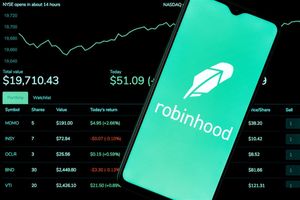
Gold, the age-old safe haven, is once again asserting its prominence in the financial landscape, having surged to unprecedented highs as of September 2025. This remarkable rally, driven by a complex interplay of monetary policy expectations and escalating global uncertainties, presents a pivotal moment for both retail and institutional investors. With prices hovering around $3,720 to $3,733 per ounce, the precious metal's ascent underscores its enduring appeal as a hedge against inflation and a critical diversifier in a volatile market.
The current climate demands a nuanced approach to gold allocation, compelling investors to re-evaluate their portfolios against the backdrop of potential Federal Reserve rate cuts, persistent geopolitical tensions, and broader economic concerns. While the allure of continued upside potential is strong, the inherent risks of volatility and potential corrections necessitate a strategic and informed investment strategy. Understanding gold's historical role and current drivers is paramount for those looking to harness its protective and appreciative qualities in their investment journey.
Gold's Ascent: A Confluence of Monetary Policy and Global Instability
The recent surge in gold prices to record levels is not an isolated event but rather the culmination of several powerful macroeconomic and geopolitical forces. The precious metal's rally, pushing it beyond the $3,700 per ounce mark, highlights its vital role as a barometer of market sentiment and a preferred asset during times of flux.
A primary catalyst for gold's current strength is the widespread anticipation of further interest rate reductions by the US Federal Reserve. Historically, lower interest rates tend to weaken the US dollar, making dollar-denominated assets like gold more attractive and affordable for international investors. This inverse relationship often sees gold prices benefiting from an environment of easing monetary policy, as the opportunity cost of holding non-yielding gold decreases relative to interest-bearing assets. Adding to this momentum are the record purchases by central banks globally, which are strategically increasing their gold reserves to diversify away from fiat currencies and bolster national financial stability amidst a shifting global economic order.
Beyond monetary policy, a pervasive sense of geopolitical and economic uncertainty has significantly fueled gold's safe-haven demand. Ongoing international conflicts, particularly in the Middle East and between Russia and Ukraine, along with a tapestry of broader economic concerns—including inflation rates, global growth prospects, and the uncertainties surrounding major upcoming elections—are prompting investors to seek out assets that traditionally perform well during periods of instability. Gold's historical resilience in such challenging environments reinforces its status as a reliable store of value and an effective hedge against systemic risks within the financial system.
These interwoven factors—expected Fed rate cuts, robust central bank demand, and heightened global instability—collectively paint a picture of why gold's ascent is not merely a transient spike but a significant market event with profound implications. It underscores the metal's fundamental role in portfolio diversification and wealth preservation, signaling to investors the importance of considering gold as a strategic component in navigating the current complex financial landscape.
Navigating the Golden Opportunity: Identifying Potential Winners and Pitfalls
In the intricate dance of the gold market, understanding who stands to gain and who faces potential setbacks hinges largely on an investor's strategy, risk tolerance, and the specific vehicles chosen for allocation. While gold often serves as a universal safe haven, the nuances of its investment can create distinct outcomes for different market participants.
For retail investors, those with a low-risk tolerance typically find security in physical gold (bullion, coins, bars), opting for a "buy and hold" strategy that prioritizes long-term wealth preservation and tangible asset ownership, despite associated storage and insurance costs. Similarly, gold-backed Exchange-Traded Funds (ETFs) like SPDR Gold Shares (NYSEARCA: GLD) offer a liquid and convenient way to gain exposure to gold prices without the logistical challenges of physical ownership. These instruments are generally considered winners for conservative investors seeking diversification and a hedge against market volatility, providing an accessible entry point even for beginners. However, investors who ignore the inherent costs of physical storage or the fees associated with certain ETFs may find their returns eroded.
On the other hand, retail investors with a higher risk tolerance might gravitate towards gold mining stocks or more speculative gold futures and options. Companies such as Barrick Gold Corp. (NYSE: GOLD) or Newmont Corporation (NYSE: NEM) can offer leveraged exposure to gold price movements, potentially yielding higher returns if the metal's value climbs. However, this comes with significantly elevated risk due to operational challenges, industry competition, and the inherent volatility of the mining sector, making them potential losers if individual company performance falters even in a strong gold market. Short-term speculators attempting to time the market for quick gains through derivatives can also face substantial losses due due to gold's price volatility.
Institutional investors also employ diversified strategies. For risk-averse institutions, direct ownership of physical gold in allocated accounts or strategic allocations to gold-backed ETFs serve as a critical hedge against inflation, deflation, and equity bear markets, enhancing portfolio resilience. More aggressive institutional players might tactically use gold ETFs and futures for short-term exposure or leverage, or actively manage portfolios of gold mining equities to capitalize on undervalued companies. Those who maintain a disciplined, strategic allocation to gold as a diversifier (e.g., 5-10% of their portfolio) are generally well-positioned to benefit from its protective qualities during periods of economic uncertainty and currency debasement. Conversely, institutions that over-rely on gold, neglecting diversification into income-generating assets, might lose out on opportunities during periods of robust economic growth when other sectors outperform.
The overarching theme for potential winners is a thoughtful, diversified approach that aligns with individual risk tolerance and long-term objectives. Losers are often those who engage in speculative, short-term trading without sufficient market understanding, ignore the costs of ownership, or fail to diversify adequately. All investors, regardless of their risk profile, must acknowledge gold's price volatility and its lack of passive income, which can be an opportunity cost compared to dividend-paying stocks or interest-bearing bonds.
Golden Ripples: Industry Shifts and Broader Market Readjustments
Gold's current robust market performance is sending ripple effects across various industries and impacting broader financial landscapes. The precious metal's ascent is not merely an isolated phenomenon but deeply embedded in wider economic and geopolitical trends, prompting significant shifts for stakeholders ranging from mining companies to central banks.
The most direct impact is felt within the gold mining industry. With gold prices soaring, companies like Barrick Gold Corp. (NYSE: GOLD) and Newmont Corporation (NYSE: NEM) are experiencing enhanced profitability, improved margins, and stronger cash flows. This favorable environment incentivizes increased production, expanded existing operations, and a surge in exploration budgets as miners seek to capitalize on the higher value of their commodity. However, while higher gold prices are generally beneficial, mining stocks remain subject to their own unique volatilities, including operational challenges, cost inflation, and geopolitical instability in their operating regions. Beyond gold, other precious metals such as silver and platinum often exhibit a positive correlation with gold during periods of economic growth, though their dependence on industrial demand can lead to divergence during market downturns.
The jewelry industry faces a more nuanced challenge. Elevated gold prices translate directly into higher retail costs for gold jewelry, potentially influencing consumer buying patterns. This can lead to a shift towards lighter-weight or higher-purity gold products, minimalist designs, or even alternative materials. Some consumers might also opt to view gold more purely as an investment, choosing to purchase bars or ingots rather than decorative pieces. Despite these pressures, the industry has historically shown resilience through innovation and adaptation to changing market dynamics. Furthermore, the rising appeal of gold can trigger shifts in capital allocation within the broader financial market, potentially drawing investment from other asset classes towards precious metals, impacting equity valuations, and driving inflows into gold-backed ETFs.
Regulatory and policy frameworks also play a pivotal role in shaping the gold market. Monetary and fiscal policies implemented by central banks and governments—such as interest rate decisions, quantitative easing, and taxation—have a direct bearing on gold prices. Lower interest rates, in particular, tend to boost gold's appeal by reducing the opportunity cost of holding a non-yielding asset. A significant trend observed is the strategic accumulation of gold by central banks globally, aimed at diversifying national reserves away from reliance on the U.S. dollar and hedging against systemic risks and geopolitical frictions. Moreover, the gold mining sector is increasingly subject to Environmental, Social, and Governance (ESG) regulations, with initiatives like the World Gold Council's Responsible Gold Mining Principles (RGMPs) pushing for sustainable practices, which can influence operational costs and access to financing for mining companies.
Historically, gold's current performance mirrors its behavior during past periods of profound economic and geopolitical stress. It served as a vital safe haven during the 1970s bull market, the 2008 financial crisis, and the initial shock of the COVID-19 pandemic in March 2020, often outperforming traditional equities during recessions. Gold has also proven to be an effective hedge against inflation, notably during the high-inflation period of 1973-1979. While there have been exceptions, such as the 1987 Black Monday or specific recessions where aggressive interest rate hikes curbed its gains, the prevailing narrative of gold as a reliable asset in uncertain times remains firmly established. Its current rally, therefore, is a contemporary manifestation of a deeply rooted historical trend, underscoring its enduring significance in global finance.
The Golden Horizon: What Lies Ahead for Gold Investors
As gold continues its upward trajectory, investors are keenly focused on what the future holds for the precious metal. Both short-term fluctuations and long-term structural shifts suggest a predominantly bullish outlook, but navigating this landscape requires close monitoring of key market indicators and a willingness to adapt investment strategies.
In the short-to-medium term (2025-2026), the consensus among financial analysts points towards continued strength in gold prices. Institutions like J.P. Morgan Research anticipate gold averaging around $3,675 per ounce by late 2025, with potential to touch $4,000 by mid-2026. This optimism is fueled by ongoing expectations of central bank interest rate cuts, which diminish the opportunity cost of holding non-yielding gold, coupled with a potentially weakening U.S. dollar and persistent global uncertainties. UBS has similarly revised its forecasts upwards, projecting prices of $3,600 by the end of March and $3,700 by the end of June 2026. These forecasts suggest that despite current high prices, the immediate future for gold remains bright, offering potential for further gains.
Looking further ahead into the long-term (2027-2030 and beyond), the structural bull case for gold appears even more compelling. While precise figures vary, some economists foresee gold potentially reaching $7,000 per ounce by 2030 in a "rational case" scenario, and even higher, up to $10,000 per ounce, by 2040-2050. These ambitious projections are underpinned by sustained central bank demand, particularly from emerging economies diversifying away from the U.S. dollar, and a declining confidence in fiat currencies and traditional government bonds. Persistent global geopolitical shifts and enduring inflation pressures are expected to continually reinforce gold's role as a fundamental store of value, challenging the U.S. dollar's long-standing dominance as a global reserve asset.
For investors, strategic pivots will be crucial. This includes considering an increased allocation to gold as a portfolio hedge, with many experts suggesting 5-10% for diversification and inflation protection. Diversification away from traditional assets, given concerns about dollar strength and equity market fragility, also remains a key theme. Investing in physical bullion, reputable gold ETFs like SPDR Gold Shares (NYSEARCA: GLD), and even exploring tokenized digital gold can provide direct exposure. Active traders may also find opportunities in tactical trading around macroeconomic events, using key economic data releases and central bank announcements to optimize entry and exit points. Furthermore, monitoring central bank actions, especially the continued accumulation of gold reserves by emerging markets, provides a strong structural tailwind for prices.
However, challenges persist. A significant and unexpected strengthening of the U.S. dollar or sustained high interest rates could temper gold's appeal. A surprisingly resilient equity market performance might also divert capital away from safe havens. Furthermore, the gold mining sector faces its own set of hurdles, including rising operational costs, declining ore grades, and complex permitting processes. Despite these potential headwinds, the overriding sentiment points towards gold maintaining its critical role in investment portfolios, driven by a landscape of persistent uncertainty and strategic shifts in global finance.
The Enduring Allure of Gold: A Strategic Imperative for Modern Portfolios
Gold's recent surge to record highs underscores its timeless appeal as a beacon of stability in an increasingly volatile global economy. The confluence of anticipated monetary easing, relentless central bank demand, and pervasive geopolitical uncertainties has firmly re-established the precious metal as a cornerstone for both risk management and wealth preservation in diversified investment portfolios.
The key takeaway from gold's current performance is its indispensable role as a safe-haven asset and an inflation hedge. Its low correlation with traditional asset classes like stocks and bonds offers a critical layer of protection during market downturns and periods of currency debasement. While the allure of potential capital appreciation is evident, the strategic importance lies in its ability to enhance portfolio resilience and provide a counterweight to broader market risks. Investors must, however, approach gold allocation with a clear understanding of their risk tolerance and choose appropriate investment vehicles, whether physical bullion, highly liquid ETFs, or, for the more adventurous, gold mining equities.
Moving forward, the gold market is poised for continued influence, shaped by the interplay of global monetary policies, geopolitical developments, and shifts in investor sentiment. The long-term outlook remains robust, with many analysts forecasting further price appreciation driven by structural demand and ongoing de-dollarization efforts by central banks. Investors should diligently monitor key indicators such as interest rate expectations, inflation data, U.S. dollar strength, and global geopolitical stability to make informed decisions.
Ultimately, gold's significance extends beyond mere commodity trading; it represents a strategic imperative for modern investors seeking to safeguard and grow their wealth amidst an ever-changing financial landscape. Its enduring allure, proven through centuries of economic cycles and crises, positions it as a vital component for those aiming to build a truly resilient and diversified portfolio in the months and years to come. The message is clear: gold is not just glittering; it's a fundamental asset in a world of uncertainty.






